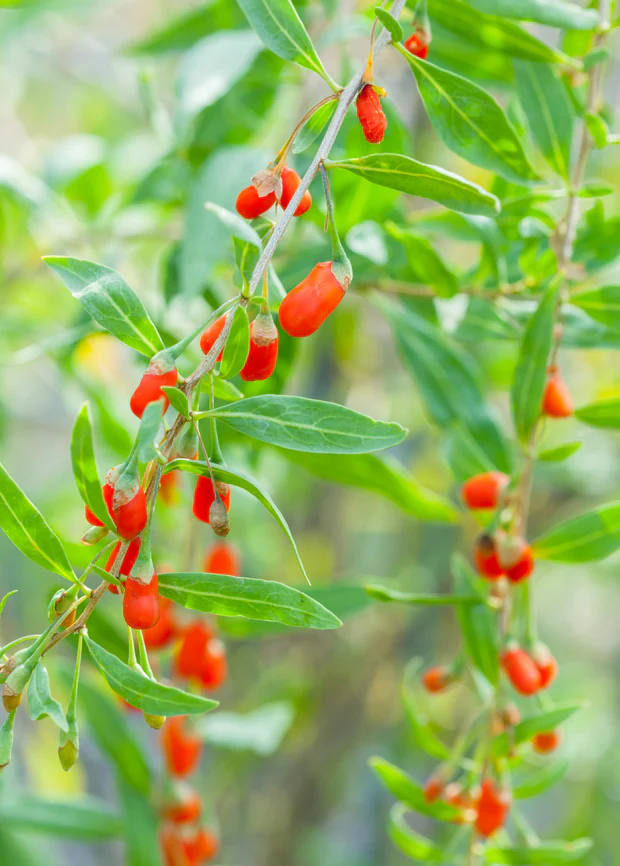
Goji Berry
Lycium barbarum
Basic Information
🌿 Family: Solanaceae🗺️ Zone: 5-9
Other Names:
- Wolfberry
- Matrimony Vine
🌡️ Ideal Temperature : 60°F – 85°F
🔥 Heat Tolerance: Up to 100°F
❄️ Cold Tolerance: Down to -15°F
🌱 Type: Perennial
Layers
- Shrub
Description
The Goji Berry (Lycium barbarum) is a deciduous woody shrub native to East Asia, growing between 1 to 3 meters in height. It features arching branches with pale gray bark and lanceolate leaves that are green and slightly fleshy. The plant produces small, tubular flowers that are lavender or light purple, leading to bright orange-red, ellipsoid berries approximately 1-2 cm in diameter. These berries are renowned for their sweet taste and high nutritional value.
🌞💧 Sun and Water Requirements:
Goji berries prefer full sun, receiving around 6-8 hours of direct sunlight daily. While they can tolerate partial shade, berry production may decrease with reduced light. They thrive in well-draining soils rich in organic matter and can tolerate moderately fertile soils, including clay. During the first year, maintain consistent soil moisture to help establish the plant; once established, goji berries become drought-tolerant. Mulching around the base helps retain soil moisture and suppress weeds. :contentReference[oaicite:0]{index=0}
✂️🫘 Methods to Propagate:
Goji berries can be propagated through seeds, cuttings, or division. Seed propagation involves planting seeds in well-draining soil and keeping them moist until germination. Softwood or hardwood cuttings can be taken and rooted in a suitable medium. Division of established plants is also possible, ensuring each division has adequate roots for successful transplantation.
🧑🌾👩🌾 When to Harvest:
The berries ripen from late summer to early autumn, typically from August to October in the Northern Hemisphere. Harvest the bright orange-red berries when they are fully colored and slightly soft to the touch. Handle them gently to avoid bruising, as they are delicate when fresh.
Purpose
- **Edible**: Goji berries are consumed fresh, dried, or processed into juices and teas. They are rich in vitamins A and C, minerals, and antioxidants, making them a nutritious addition to various dishes.
- **Medicinal**: Traditionally used in Chinese medicine, goji berries are believed to support immune function, improve vision, and promote overall health, although scientific evidence is limited.
- **Wildlife Attractor**: The bright berries attract birds and beneficial insects, supporting local biodiversity.
- **Border Plant**: With their shrubby growth habit, goji berries can serve as natural borders or hedges in garden designs.